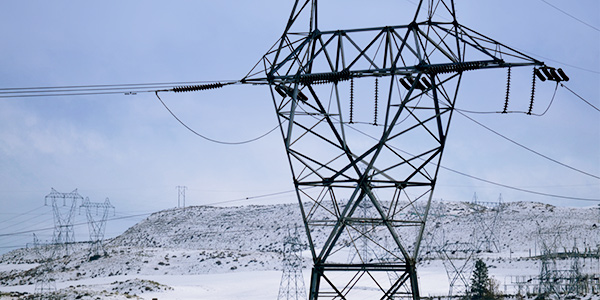In an effort to improve the accuracy of U.S. transmission transfer capability, FERC on Thursday issued a proposal to require all transmission providers to implement seasonal and ambient-adjusted ratings (AAR) on their lines (RM20-16).
Such ratings are based on the predicted seasonal or forecasted air temperatures, allowing for more electricity to flow when the temperature is lower and, thus, reducing congestion and its costs.
Most transmission providers use static ratings that are only updated after equipment is upgraded. Static ratings tend to be very conservative and based on worst-case-scenario temperatures, often restricting power flow unnecessarily. Using ratings that vary by season is more accurate, but they still do not account for unexpected temperature fluctuations.
“Because ambient air temperatures are typically less extreme than worst-case assumptions, seasonal and static transmission line ratings typically indicate that there is less transmission system transfer capability available than the transmission system can actually provide,” FERC staff told commissioners in a presentation during their monthly open meeting. “This increases congestion costs.”
AARs’ updates can vary in frequency from daily to every 15 minutes. According to FERC, AARs are already widely used in PJM and ERCOT; elsewhere in the U.S., static and seasonal ratings are the norm.

| © RTO Insider
The commission’s Notice of Proposed Rulemaking would require transmission owners to implement both seasonal ratings and AARs, with the former being used to evaluate long-term transmission service requests and the latter for near-term.
It would also require RTOs and ISOs to allow TOs to update their line ratings at least hourly to allow them to use a method more accurate than AARs: dynamic line ratings (DLRs). These take into account many other factors in addition to temperature, such as wind speed, precipitation, humidity, cloud cover and solar intensity, allowing for a much more accurate rating.
FERC staff said that it did not seek to require the use of DLR devices because of the challenges and costs of installing them. But they also said the provision in the NOPR may encourage TOs to begin testing their use. “This proposed requirement seeks to remove this barrier to adoption of these more accurate line ratings.”
The proposal comes nearly a year after a staff-led technical conference on the use of AARs and DLRs. Many transmission company representatives who spoke there recommended against such a proposal, saying that a one-size-fits-all approach was inappropriate. (See FERC Considering Tx Line Rating Rules.)
But it seems FERC was convinced by the testimony of, among others, PJM Independent Market Monitor Joe Bowring and Michael Chiasson of Potomac Economics, the Monitor for ERCOT, ISO-NE, MISO and NYISO. They lambasted TOs for having such inaccurate ratings and their lack of transparency around how they determine them.
To address their latter criticism, FERC proposed requiring TOs to share their ratings and methodologies with RTO/ISO market monitors. “Such information sharing would increase situational awareness and improve the ability to verify the accuracy of transmission line ratings,” staff said.
Comments on the NOPR are due 60 days after its publication in the Federal Register. If approved, TOs would be required to prioritize implementing AARs on historically congested lines, defined as lines that have been congested in the last five years. Those lines would need to have their AARs in place within a year; all other lines would be given two years.
Commissioners Neil Chatterjee and Richard Glick were enthusiastic about the proposal.
“If finalized today’s proposed rulemaking will produce substantial benefits to consumers by simply ensuring line ratings are more accurate,” said Chatterjee, who as chair had initiated the proceeding that led to the NOPR.
“Most people will tell you we need a substantial amount of new transmission capacity, and I definitely agree,” Glick said. “But we should also strive to operate the current grid more efficiently to ensure that we squeeze more out of current assets while, of course, not impairing grid reliability. The NOPR would take us a substantial step in the right direction.”
Even Chairman James Danly — who rarely makes any comments at all and did not make an opening statement during his first open meeting as chair — chimed in, though he did not indicate how he felt about the proposal itself. “I have no questions [for staff]. I’ll just say that I think this is a very important issue, and I encourage everybody to comment and file so that we get the most robust record we can.”
As part of the NOPR, the commission is also seeking comment on whether it should require transmission providers to use unique emergency ratings.



